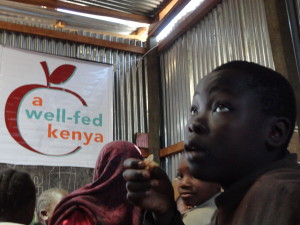our grants for feeding programs
The Numbers
The COVID-19 pandemic, global conflicts, climate disasters and weather extremes have driven an increase in the number of people experiencing hunger. According to the 2023 State of Food Security and Nutrition in the World report, between 691 and 783 million people faced hunger in 2022, marking an increase of 122 million people compared to 2019.
The report also highlights that nearly 30 percent of the global population – 2.4 billion people – qualified as moderately or severely food insecure in 2022, 391 million more than in 2019.
The number of people officially counted as hungry can more than double when “normal” and “intense” levels of activity are considered in the calculations. The number further expands when considering acute hunger (intermittent and/or lasting less than one year) or moderate food insecurity.
Moderate food insecurity is defined by the FAO as people facing uncertainties about their ability to obtain food and being forced to compromise on the quality and/or quantity. The combination of moderate and severe levels of food insecurity brings the estimated total to 26.4 percent of the world population, amounting to about 2 billion people.
The numbers of undernourished, food-insecure people increases further still when intermittent food shortages and nutritional intake are considered.
Children suffer the most severe consequences of our broken food system. According to UNICEF, “nearly half of all deaths in children under five are attributable to undernutrition.”
Here’s the breakdown of the number of children dying of hunger and hunger-related causes:
- Hour: 300+
- Day: 7,000+
- Year: 2.65+ million
So, why is it so rare that global hunger makes the nightly news? In part, it’s because such extreme and widespread hunger and death are the norm.
It’s not on the news because it’s not “new.”
Hunger as Structural Violence

Gandhi brought widespread attention to conceptualizing hunger and poverty as forms of violence.
Suffering in itself is not injustice. Harm is not necessarily violence. Accidents happen. Natural disasters and diseases happen.
While less obvious than physical acts of violence, hunger is not merely the result of bad fortune and inadequate assistance. Hunger is violence when it is the consequence of an inequitable and unjust food system that rewards the powerful for exploiting the vulnerable.
It would be difficult to overstate the ripple effects that hunger has throughout society. Undernourished adults and children suffer poor health, low energy levels, and a reduced ability to concentrate. This makes it all the more difficult to work the arduous hours that are often required for mere survival. For children fortunate enough to attend school, their learning is severely impaired.
As food and social justice author Frances Moore Lappé explains, hunger does not even need to be chronic to have devastating generational consequences. She emphasizes that “even short-term nutritional deficits, particularly if occurring in the first 1,000 days of life, can negatively affect health, learning, and income over one’s lifetime, and even affect one’s offspring.”
photo: Grant for school feeding program in 2013 via partnership with A Well-Fed Kenya.
References
- World Food Program: Zero Hunger page. Last accessed May 31, 2020. https://www.wfp.org/zero-hunger and https://www.wfp.org/publications/2019-hunger-map.
- Lappé, F., Clapp, J., Anderson, M., Broad, R., Messer, E., Pogge, T., & Wise, T. (2013). “How We Count Hunger Matters.” Ethics & International Affairs, 27(3), 251-259. doi:10.1017/S0892679413000191. https://www.ethicsandinternationalaffairs.org/2013/how-we-count-hunger-matters.
- Food and Agriculture Organization of the United Nations (FAO): SOFI2019 page. Accessed May 31, 2020: http://www.fao.org/state-of-food-security-nutrition/en.
- UNICEF: Malnutrition page. Last updated March 2020. Last accessed May 31, 2020: https://data.unicef.org/topic/nutrition/malnutrition.
- UNICEF: Under-Five Mortality page. Last accessed May 31, 2020: https://data.unicef.org/topic/child-survival/under-five-mortality.
Last updated July 27, 2020

